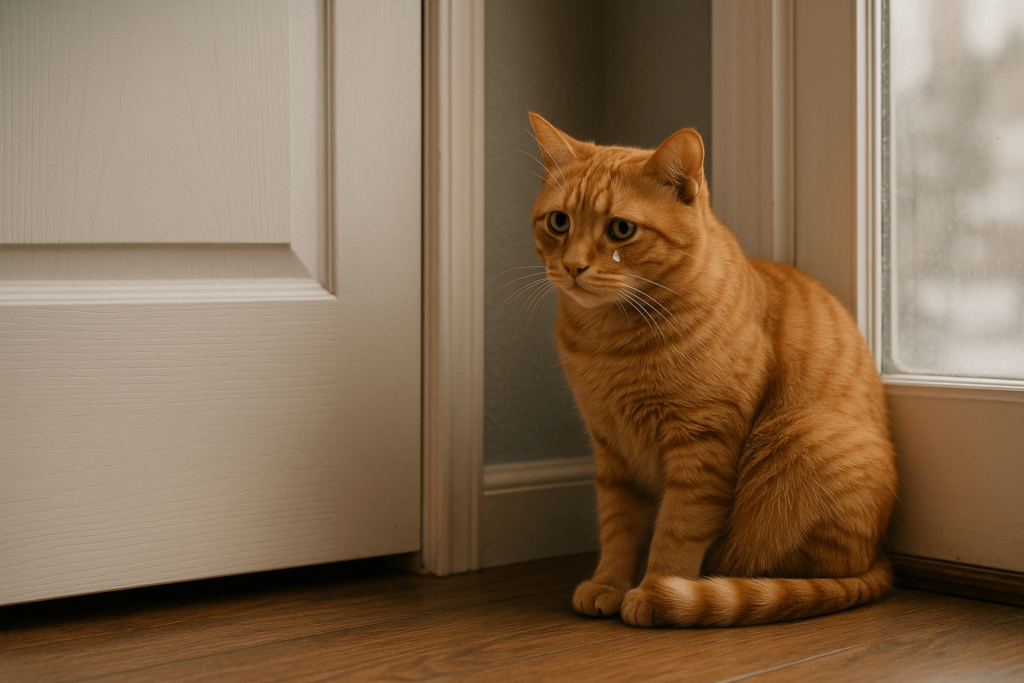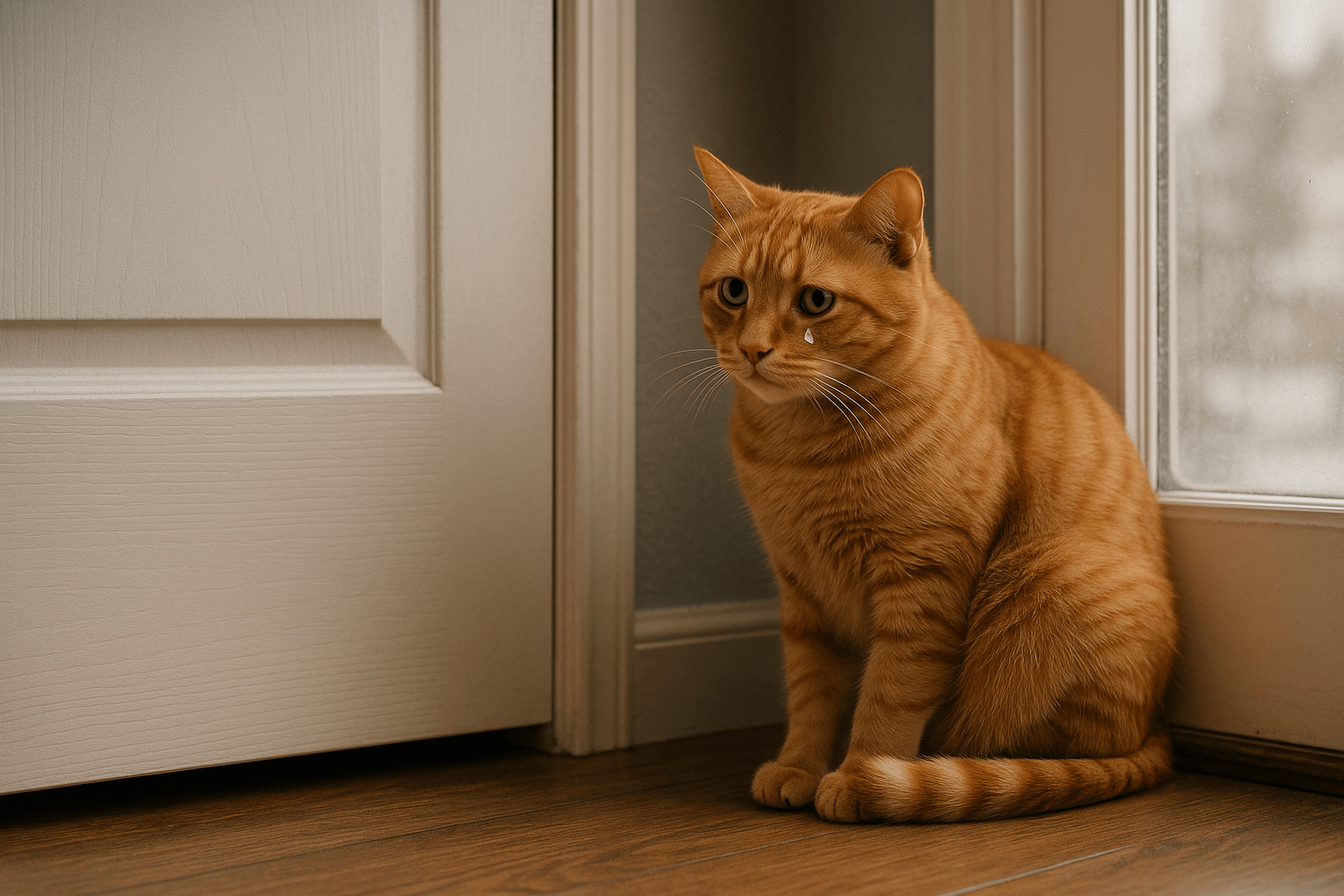Cat Separation Anxiety Symptoms: What Every Cat Owner Should Know
Cats are often perceived as independent and self-sufficient creatures, but they’re more emotionally connected to their owners than many realize. Just like dogs, cats can experience separation anxiety when left alone for extended periods. This condition manifests in various ways, from behavioral changes to physical symptoms, and can significantly impact your cat’s well-being. Understanding the signs of cat separation anxiety is the first step toward addressing it effectively. In this blog post, we’ll explore the symptoms, causes, and solutions to help you support your feline friend during times of stress.
Common Symptoms of Cat Separation Anxiety
Recognizing the signs of separation anxiety in cats is crucial for early intervention. These symptoms often appear when your cat feels overly attached or stressed due to your absence.
Excessive Vocalization:
Cats may meow loudly or persistently when left alone, attempting to communicate their distress or seek attention.Destructive Behavior:
Scratching furniture, knocking over objects, or chewing on items can indicate frustration or anxiety caused by your departure.Inappropriate Elimination:
Some cats urinate or defecate outside the litter box as a way to cope with stress or mark their territory in your absence.Excessive Grooming:
Over-grooming, leading to bald patches or skin irritation, is a common sign of anxiety in cats seeking comfort.Lethargy or Withdrawal:
Instead of acting out, some cats become unusually quiet or withdrawn, showing little interest in food or play.
These symptoms are not only distressing for your cat but can also create challenges for you as an owner. Identifying them early allows you to take steps to alleviate your cat’s anxiety.

Triggers That Can Cause Cat Separation Anxiety
Understanding the root causes of separation anxiety can help you address the issue more effectively. Several factors contribute to why some cats struggle when left alone.
Sudden Changes in Routine:
A shift in your schedule, such as returning to work after a period of being home, can leave your cat feeling unsettled.Lack of Socialization:
Cats that haven’t been exposed to different environments or people may struggle with adaptability when left alone.Over-Attachment to Owners:
Cats that rely heavily on their owners for companionship may feel abandoned when separated, even temporarily.Past Trauma or Neglect:
Cats adopted from shelters or those with a history of neglect may be more prone to separation-related stress.Environmental Stressors:
Moving homes, loud noises, or other disruptions can heighten a cat’s sensitivity to being left alone.
By identifying potential triggers, you can take proactive measures to reduce your cat’s anxiety and create a more stable environment.
Check this guide 👉I Have Separation Anxiety from My Cat: Best 7 Tips!
Check this guide 👉Understanding Anxiety in Cats: Best 7 Expert Tips!
Check this guide 👉My Cat Has Attachment Issues: Best 7 Expert Tips!
Symptoms of Cat Separation Anxiety | Possible Solutions |
|---|---|
Excessive vocalization | Provide interactive toys or calming music |
Destructive behavior | Use scratching posts and deterrent sprays |
Inappropriate elimination | Ensure a clean, accessible litter box |
Excessive grooming | Offer distractions like puzzle feeders |
Lethargy or withdrawal | Spend quality time together daily |
How to Help Your Cat Cope with Separation Anxiety
Supporting your cat through separation anxiety requires patience and consistency. Here are practical steps you can take to ease their discomfort and build resilience.
Create a Safe Space:
Designate a cozy area with familiar scents, bedding, and toys where your cat can retreat when feeling anxious.Establish a Routine:
Maintain consistent feeding, play, and departure schedules to provide structure and predictability for your cat.Use Calming Products:
Pheromone diffusers or sprays can help soothe your cat by mimicking natural calming scents.Gradual Desensitization:
Practice leaving for short periods and gradually increasing the duration to help your cat adjust to your absence.Provide Mental Stimulation:
Puzzle feeders, treat-dispensing toys, or automated laser pointers can keep your cat entertained while you’re away.
With these strategies, you can help your cat feel more secure and reduce their reliance on your constant presence.
Preventative Measures to Avoid Separation Anxiety
Preventing separation anxiety before it starts is key to ensuring your cat remains happy and stress-free. These proactive measures can strengthen your bond and foster independence.
Encourage Independence Early:
Teach your cat to spend time alone from an early age by gradually increasing the length of your departures.Socialize Your Cat:
Introduce your cat to new people, environments, and experiences to build confidence and reduce fear of change.Avoid Reinforcing Clingy Behavior:
While it’s tempting to comfort an anxious cat constantly, doing so can reinforce clinginess. Reward calm behavior instead.Maintain a Balanced Environment:
Keep your home peaceful and free of unnecessary disruptions to minimize external stressors.Regular Play and Exercise:
Engage your cat in daily play sessions to burn off excess energy and promote relaxation during downtime.
By taking preventative action, you can reduce the likelihood of separation anxiety developing in the first place.
Signs Your Cat Is Becoming More Independent
As you work to manage separation anxiety, look for signs that your cat is gaining confidence and learning to cope with time alone. These positive changes indicate progress in overcoming their anxiety.
Increased Exploration:
Your cat begins exploring the house independently rather than following you constantly.Engagement with Toys:
They show interest in playing with toys or puzzles without needing your direct involvement.Reduced Vocalization:
Fewer cries or meows when you leave suggest they’re becoming more comfortable with your absence.Improved Sleep Patterns:
Cats that sleep peacefully during your absence demonstrate reduced stress levels.Consistent Litter Box Use:
Returning to normal bathroom habits indicates a return to emotional stability.
These signs reflect your cat’s growing independence and improved mental well-being.
How to Create a Calming Environment for Your Cat
A soothing environment can make a significant difference in reducing your cat’s separation anxiety. These tips will help you design a space that promotes relaxation and security.
Soft Lighting:
Dim lights or natural sunlight can create a calming atmosphere for your cat.Comfortable Bedding:
Provide plush, cozy beds or blankets infused with your scent for added reassurance.Background Noise:
Soft music or white noise machines can mask unsettling sounds and provide comfort.Familiar Scents:
Leave clothing or items with your scent nearby to remind your cat of your presence.Access to Windows:
Allowing your cat to observe the outdoors can provide entertainment and distraction.
A calming environment helps ease your cat’s transition to spending time alone.
When to Seek Professional Help
While many cases of separation anxiety can be managed at home, some situations require professional guidance. Knowing when to consult a vet or animal behaviorist ensures your cat receives the care they need.
Persistent Symptoms Despite Efforts:
If your cat’s anxiety doesn’t improve despite consistent interventions, seek expert advice.Aggressive or Harmful Behavior:
Any signs of aggression toward people, pets, or themselves warrant immediate attention.Health Concerns:
Sudden changes in eating, grooming, or bathroom habits could indicate underlying medical issues.Severe Destructiveness:
Extensive property damage or self-harm suggests the need for professional support.Uncertainty About Diagnosis:
If you’re unsure whether your cat’s behavior stems from anxiety or another cause, consult a specialist.
Professional help can provide tailored solutions and peace of mind for both you and your cat.
Frequently Asked Questions About Cat Separation Anxiety
Can cats really experience separation anxiety?
Yes, cats can develop separation anxiety, especially if they form strong bonds with their owners.
How long does it take to train a cat to be alone?
It varies by cat, but gradual desensitization over weeks or months is typically effective.
Are certain breeds more prone to separation anxiety?
While any cat can develop separation anxiety, highly social breeds like Siamese or Ragdolls may be more susceptible.
What should I do if my cat eliminates outside the litter box?
Rule out medical issues first, then address potential stressors and ensure the litter box is clean and accessible.
Can medication help with cat separation anxiety?
In severe cases, a vet may recommend anti-anxiety medications or supplements, but behavioral interventions should always come first.
Supporting Your Cat Through Separation Anxiety
Separation anxiety in cats is a challenging but manageable condition that requires empathy, patience, and a willingness to adapt. By recognizing the symptoms, addressing underlying triggers, and implementing supportive strategies, you can help your feline companion feel more secure and content—even when you’re not around. Remember, every cat is unique, and what works for one may not work for another. With time and effort, you can nurture a stronger bond and create a harmonious environment where both you and your cat thrive.
Cat Fever Treatment: Best 7 Expert Tips! Discover expert advice on identifying, managing, and treating fever in cats to ensure their quick recovery and well-being.
Understanding Meloxicam for Cats: Best 7 Expert Tips! Learn how to safely administer meloxicam, manage side effects, and ensure your cat's comfort with expert advice on feline pain relief.
Amoxicillin for Cat UTI: Best 7 Expert Tips! Discover safe usage, dosage guidelines, and expert advice on treating feline urinary tract infections effectively with amoxicillin.
Understanding Cat Cancer Treatment: Best 7 Expert Tips! Discover expert advice on managing feline cancer, from early detection to treatment options, ensuring your cat’s health and comfort.





